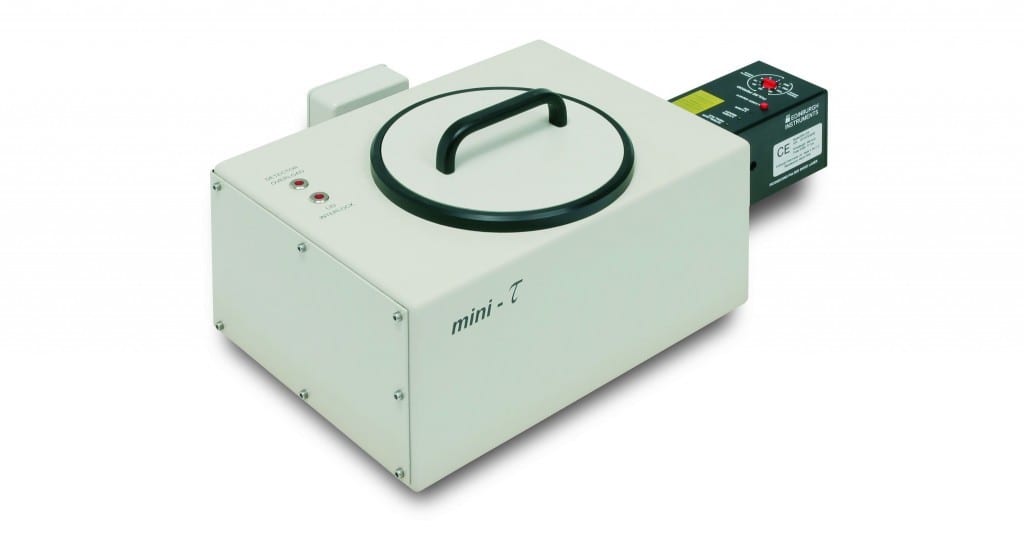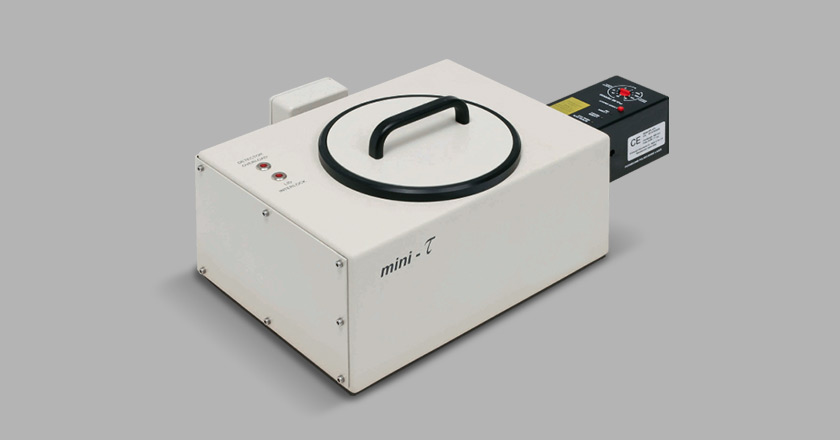
Pulsed Sources
Edinburgh Instruments diode lasers and LEDs for fluorescence lifetime are directly compatible with MiniTau

Send us your samples, and we can measure them live in an online demonstration
Contact us to arrange an online demonstration

Pulsed Sources

Wide Lifetime Coverage

Sensitive

User-Friendly

Space Saving
"*" indicates required fields
The Mini-tau is an ultra-compact, low cost, filter-based dedicated fluorescence lifetime spectrometer. Using Time-Correlated Single Photon Counting (TCSPC), the Mini-tau can measure fluorescence lifetimes ranging from 25 ps to 10 μs (source dependent). It can also be equipped with Multi-Channel Scaling (MCS) electronics for long-range photoluminescence from 10 ns to 10 s.
Whether you need to measure fluorescence lifetimes or time-resolved fluorescence anisotropy for research, quality assurance or teaching applications, the Mini-tau is the ideal all-inclusive, fully integrated solution. Operation is extremely simple and intuitive making it the ideal entry-level instrument for photoluminescence lifetime.
Fluoracle software is supplied with the Mini-tau. It has an easy-to-use interface and allows users to comprehensively record data and accurately analyse complex decay kinetics of up to four lifetimes.

MINITAU-TCSPC
Time-Correlated Single Photon Counting for fluorescence lifetimes of ~25 ps – 10 µs
MINITAU-MCS
Multi-Channel Scaling for phosphorescence lifetimes of 10 ns – 10 s
MINITAU-DUAL
Combines TCSPC and MCS to cover the full range of ~25 ps – 10 s
The Mini-tau spectrometer can be used with Edinburgh Instruments pulsed sources for TCSPC and MCS (EPL, EPLED, HPL, VPL, VPLED). Switching between sources only takes a few seconds and does not require any alignment.
The standard cuvette holder features water/coolant circulation for adjusting temperature. An external bath (not included) is required.
This sample holder is suitable for measuring front-face emission of slides and powders in cuvettes. Two additional inserts are supplied. Insert for holding films/slides, and insert comprising demountable cuvette.
Blue sensitive PMT, uncooled
Red sensitive PMT, cooled
Extended red sensitive PMT, cooled
| Specification | |
|---|---|
| Mode of operation | Time-Correlated Single Photon Counting (TCSPC), Multi-Channel Scaling (MCS) |
| Lifetime range | Approx. 25 ps - 10 µs (TCSPC), 10 ns - 10 s (MCS) |
| Instrumental pulse width | 250 ps (in standard configuration with diode laser excitation) |
| Excitation wavelengths | All picosecond pulsed diode lasers (EPL Series, HPL Series) and pulsed LEDs can be used in TCSPC (375 nm through to 980 nm). The above picosecond sources as well as variable pulse width sources (VPL Series, VPLED Series) can be used in MCS mode. |
| Attenuation | 4 orders of magnitude, linear |
| Filter Wheel | Comes as standard to accept 50 mm x 50 mm filters. Filter wheel with 5 bandpass filters of approx. 50nm width centred at 450nm, 500nm, 550nm, 600nm, and 650nm; one position without filter. |
| Detector | High speed PMT detector with amplifier, interlock and overload protection in fan-assisted TE cooled housing. Spectral range 230 nm - 850 nm or 230 nm - 920 nm, typical pulse width 180 ps, dark count rate 150 cps at 0°C. ps, dark count rate: 150 cps at 0°C |
| Data acquisition | TCC2 electronics module: up to 8192 channels per curve, forward or reverse mode, minimum channel resolution 305 fs, 20 ps time jitter, TAC ranges from 2.5 ns to 50 µs in TCSPC mode. Up to 8000 channels per curve, 10 ns resolution and up to 10 MHz repetition rate in MCS mode. |
| Data analysis | Marquardt-Levenberg algorithm - up to 4 lifetimes - anisotropy calculation |
| Dimensions | 265 mm (l) x 195 mm (d) x 125 mm (h) (excluding laser, detector, lid) |
| Weight | 5 kg (excluding laser, detector) |